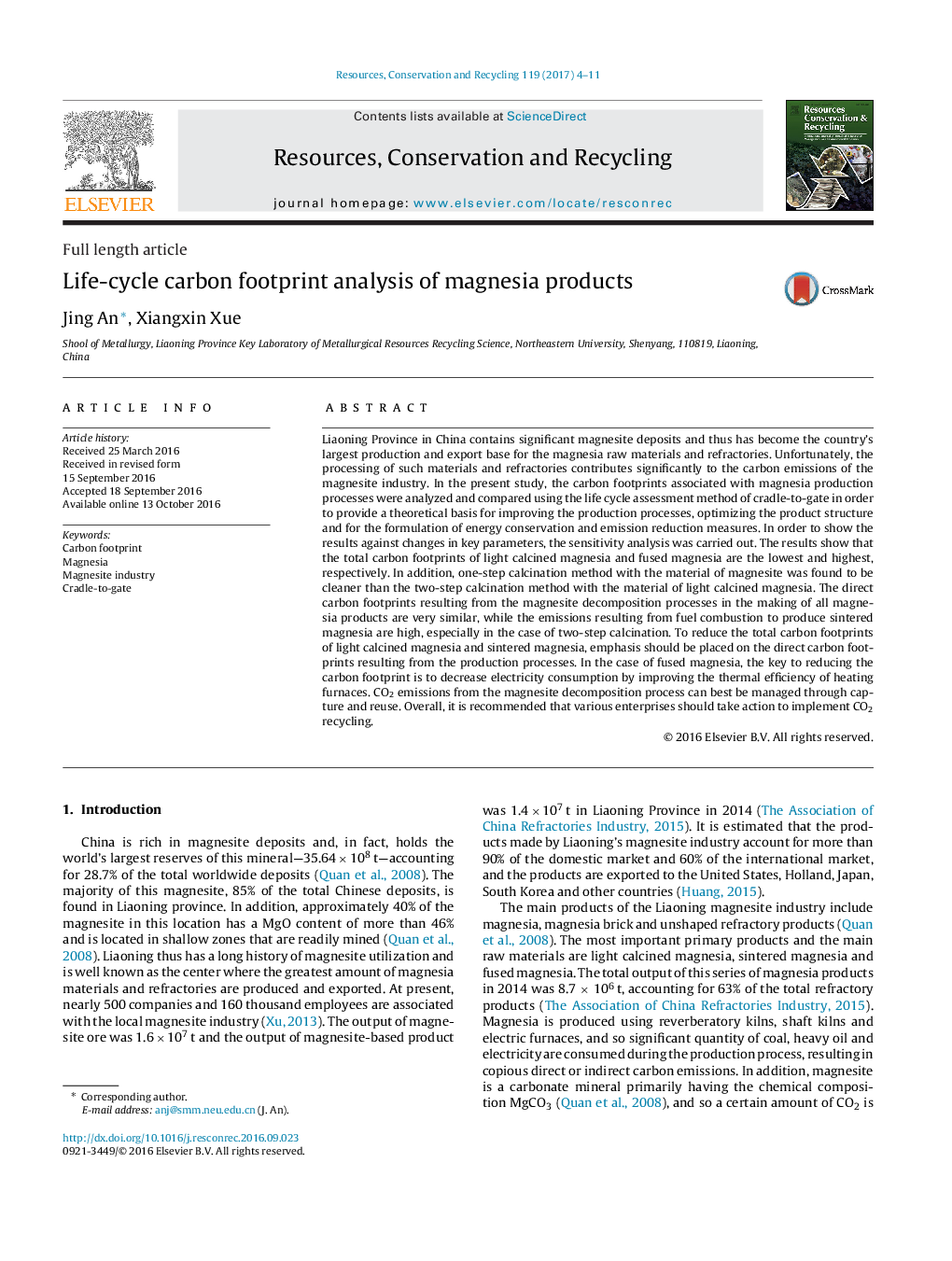| کد مقاله | کد نشریه | سال انتشار | مقاله انگلیسی | نسخه تمام متن |
|---|---|---|---|---|
| 5118873 | 1485673 | 2017 | 8 صفحه PDF | دانلود رایگان |
- The aim of this study is to promote cleaner production of magnesite industry.
- Carbon footprints calculation method associated with magnesia products were proposed based on the life cycle assessment method of cradle-to-gate.
- The carbon footprints of various magnesia products were calculated quantitatively and the emission characteristic was analyzed.
- Some suggestions to reduce the carbon footprints of each kind of product were proposed.
Liaoning Province in China contains significant magnesite deposits and thus has become the country's largest production and export base for the magnesia raw materials and refractories. Unfortunately, the processing of such materials and refractories contributes significantly to the carbon emissions of the magnesite industry. In the present study, the carbon footprints associated with magnesia production processes were analyzed and compared using the life cycle assessment method of cradle-to-gate in order to provide a theoretical basis for improving the production processes, optimizing the product structure and for the formulation of energy conservation and emission reduction measures. In order to show the results against changes in key parameters, the sensitivity analysis was carried out. The results show that the total carbon footprints of light calcined magnesia and fused magnesia are the lowest and highest, respectively. In addition, one-step calcination method with the material of magnesite was found to be cleaner than the two-step calcination method with the material of light calcined magnesia. The direct carbon footprints resulting from the magnesite decomposition processes in the making of all magnesia products are very similar, while the emissions resulting from fuel combustion to produce sintered magnesia are high, especially in the case of two-step calcination. To reduce the total carbon footprints of light calcined magnesia and sintered magnesia, emphasis should be placed on the direct carbon footprints resulting from the production processes. In the case of fused magnesia, the key to reducing the carbon footprint is to decrease electricity consumption by improving the thermal efficiency of heating furnaces. CO2 emissions from the magnesite decomposition process can best be managed through capture and reuse. Overall, it is recommended that various enterprises should take action to implement CO2 recycling.
Journal: Resources, Conservation and Recycling - Volume 119, April 2017, Pages 4-11
